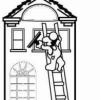Sign in to follow this
Followers
0

My Avenger Redo
By
cleanview, in Gun Holsters, Rifle Slings and Knife Sheathes

By
cleanview, in Gun Holsters, Rifle Slings and Knife Sheathes